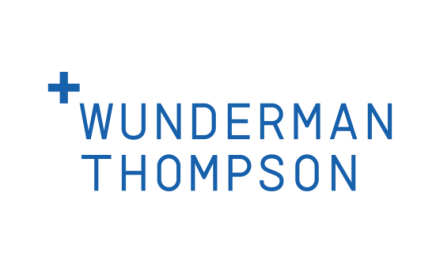
Wirginia Leszczyńska, chief operating officer of Katowice-based commercial real-estate developer, DL Invest Group, talks to the BPCC’s Michael Dembinski about the prospects for the sector in these turbulent times, and where the growth opportunities lie.

We can see across Poland a general picture taking shape – commercial real estate development has slowed down after the pandemic, while industrial real estate is doing well, driven by near-shoring, e-commerce and the Western response to Russia’s invasion of Ukraine. Do you see the same picture at DL Invest Group, as a developer of offices, warehouses and retail parks?
From the point of view of the development of the logistics and warehouse sector, there is a noticeable increase in requests for new warehouse space, including both in the build-to-suit formula and multi-tenant facilities with production and logistics profiles. Also important is the considerable demand for the expansion of tenants in existing locations or their relocation to new facilities with bigger lease space. This situation is unlikely to change in the coming months; the choice of Poland by new customers is largely driven by key attributes, such as a convenient location for distribution within Poland and, more broadly, to Central and Eastern Europe, including the Czech Republic and Slovakia, due to the access to well-developed transport infrastructure.
In terms of office development, we managed to open two office complexes in southern Poland during the pandemic, and both are now almost fully leased. This shows the importance of well-selected locations for such developments, where due to the additional services like convenience stores, gym, restaurants and other attractions, employees tend to want to come back from home to working full office hours.
Although DL Invest Group has strong Silesian roots, it is now very much a Polish developer with projects ongoing across the country. How do you currently see regional differences? Where is demand strongest, where must supply catch up with it?
DL Invest Group is currently developing in the whole of Poland, thanks to that we can estimate those future locations where the demand will be higher. From our perspective, tenants from the logistic and manufacturing sectors are choosing mainly southern or central Poland as their future locations. Key factors, beside access to a well-developed transport infrastructure (A4 and A1 motorways, and the Drogowa Trasa Srednicowa connecting the largest cities of the Silesian agglomeration, and the north-south S1 expressway due to open in 2024) are also the Katowice Special Economic Zone, Pyrzowice International Airport providing domestic, international and cargo transport, as well as well-developed rail transport: there is access to the broad-gauge Hutnicza Linia Szerokotorowa (LHS) railway line, and the trans-shipment terminal Euroterminal Sławków where goods from Asia are reloaded onto standard-gauge European trains. However, central Poland is still considered as a main hub location for most of our clients, and it is here that we’ve noticed an increase in demand during the past few months. Because of that, we have started the most recent phase of our logistic centre DL Invest Park Teresin with the aim of meeting the expectations of our tenants regarding their further expansion.
High inflation means high interest rates – and higher yields on government bonds. Developers and investors in real estate have historically found such situations challenging. How are you coping with inflation in building materials, labour shortages and higher borrowing costs? Will the resulting cost increases be passed on to tenants? Do you see a general softening of supply and demand across the real-estate sector?
The forecast for the construction market in 2023 will be demanding for sure. The Polish economy is waiting for the release of EU funds for the National Recovery Plan; once unblocked, these funds will undoubtedly stimulate the construction sector.
Analysing the prices of construction materials and basic raw materials for December 2022-January 2023, we can see that the prices of most construction materials are now dropping significantly. There are no problems with the availability of glass, mineral wool, sheet, steel, copper and aluminum, as was the case in the second quarter of 2022.
The construction market is highly correlated with the economic and geopolitical situations. We can observe a revival in the industry; contractors are more aware. Optimism and confidence are returning to the market.
We contract only experienced local subcontractors who can guarantee us the best quality and market price. Before contracting, we thoroughly check their resources potential and production capacity to reduce the construction risk. We have been developing our internal structure for more than 15 years: our construction department with its own design department and production preparation department, and dedicated staff responsible for each project. This structure allows us to manage the construction process to the highest level.
The macroeconomic cycle will swing upward, the war will be over (hopefully soon with a just peace) – but climate change remains a massive systemic challenge facing mankind. The built environment is responsible for over a third of all manmade greenhouse gas emissions – how important is it to DL Invest Group as a developer to drive the green transition? Are you finding that in the current economic climate, your clients are looking for cheaper, less-environmentally friendly, solutions than you’d personally like them to be?
Investment projects within the DL Invest Group portfolio are implemented based on the Group’s sustainable development system. Each subsequent investment is improved with new technological, ecological, functional and visual solutions. Particular emphasis is placed on meeting the requirements of building performance certificates, and they focus on the areas of general management policy, site management and procedural issues, consumption of light energy and carbon dioxide, internal and external factors affecting the health and well-being of employees, impact on air and water pollution, CO2 emissions, location of the buildings and their proximity to public transport stops, use of amenities for cyclists, development of green areas, protection of values such as biodiversity of flora and fauna, use of materials obtained from legal and local sources, with appropriate ecological certificates and applying solutions to reduce water consumption.
DL Invest Group is planning to obtain BREEAM certificates for its developments; these certificates are not required in Poland by law, but are part of the long-term strategy for our company. Moreover the portfolio of DL Invest Group is expanded each year with new projects in the segment of office, commercial and warehouse real estate, which are already at the design stage, improved with modern solutions influencing the efficiency of buildings.
Looking at foreign investment into Poland, we are hearing mixed stories from our members – on one hand, Russian aggression is seen as a risk factor, with some investors taking a wait-and-see approach; others are taking this moment to invest in Poland – in shared services, in manufacturing, in supply-chain nearshoring. What is your current experience in terms of new inbound FDI coming into Poland?
From our perspective, we saw right at the beginning of the war that many of investors and foreign clients stopped their activities towards the Polish market. Thankfully, however, this was just a phase that didn’t last long. Many of them have since decided to renew their plans and return to their conversations regarding new investments opportunities. We have noticed high interest mainly in warehouse and office sectors.
What are the biggest projects that DL Invest Group is working on right now and in the near future (that you can tell us about)?
It’s hard to talk only about the biggest projects – all of our investments are very important for us. There are the second and third stages of the DL Invest Park Teresin – a logistics centre of almost 100,000m2 in one location. Located in Teresin-Gaj, in the Mazowieckie voivodship, 40 km west of Warsaw, the centre was purpose-built for retailer Stokrotka and prepared in accordance with the requirements of the FMCG industry. Then, thanks to the cooperation in DL Invest Park Psary, a warehouse, cold-storage and freezer space was created, which was later increased to 11,000m2, confirming DL Invest Group’s competence in the FMCG sector.
In the office segment we have currently the projects – one historical building in Wrocław and two new office complexes in southern Poland. One of them is an office and retail complex in the Silesia region, with a leasable area of 16,190m2 gross leasable area and a usable area of over 19,000m2, developed in accordance with the DL Invest Group strategy. The building was more than 50% leased before construction started, the main tenant being Ista Shared Services. The possibility of expansion was covered here by an additional 40,000 m2 of leasable area.
Those are just two examples of current projects, but our portfolio will be soon updated with build-to-suit projects in another five locations as we work closely with our clients and we are actively looking for new opportunities for expansion of their business activity.



























